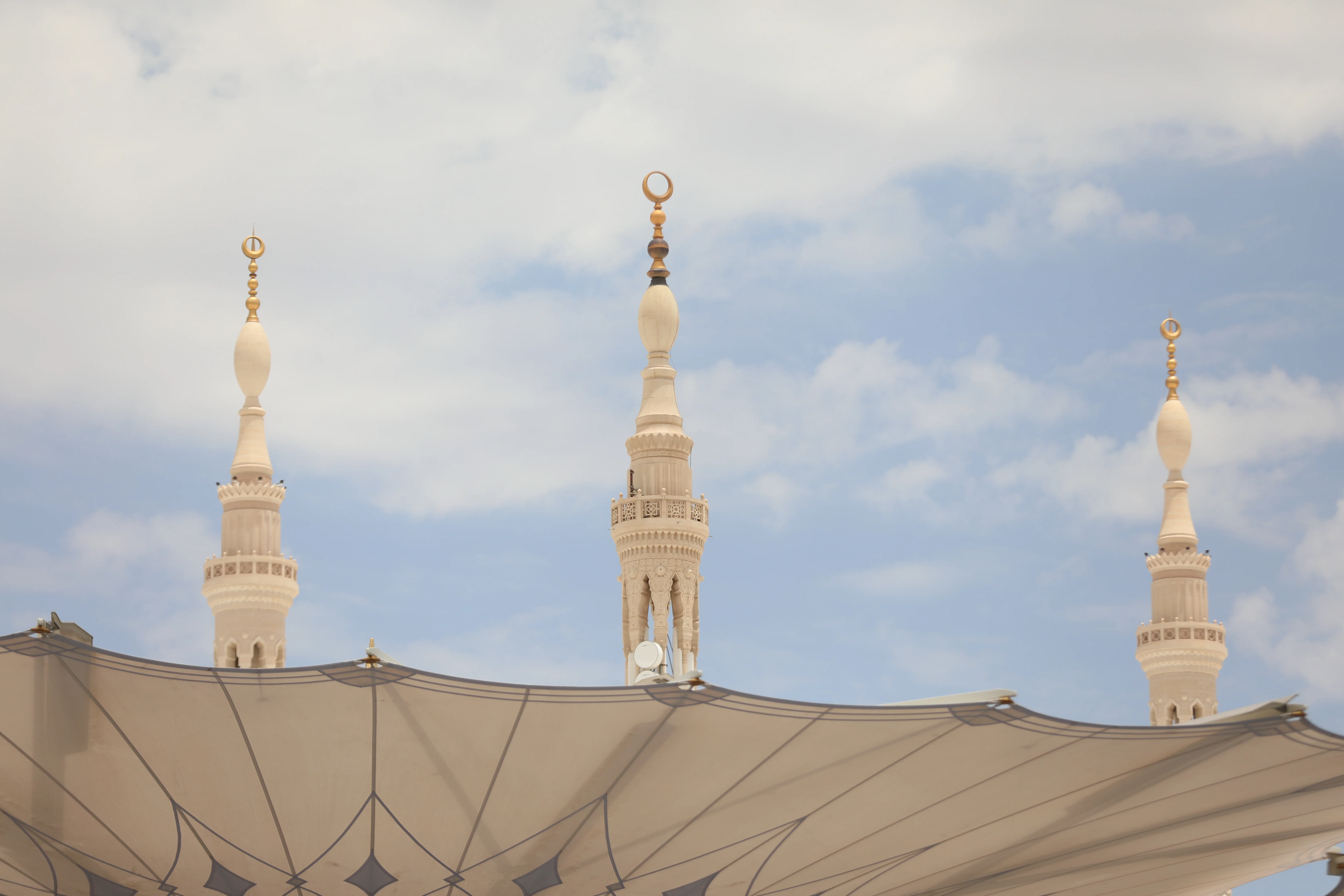
Before the Adhān was prescribed, the caller appointed by the Prophet (peace and blessings be upon him) would announce, "Assemble for prayer," and people would gather. When the Qibla was changed to the Kaaba, the Adhān was prescribed. The Prophet (peace and blessings be upon him) was concerned about how to call people to prayer. Some Muslims suggested using a horn, while others proposed a bell. During these discussions, Abdullah ibn Zayd al-Khazraji (may Allah be pleased with him) came to the Prophet and said, "I had a vision in which a man in two green garments, holding a bell, passed by me. I asked, ‘Are you selling this bell?’ He replied, ‘What will you do with it?’ I said, ‘We will use it to call for prayer.’ He said, ‘Shall I not guide you to something better?’ I asked, ‘What is it?’ He replied, ‘Say: Allahu Akbar, Allahu Akbar,’" and recited the full Adhān. When informed, the Prophet (peace and blessings be upon him) said, "It is a true vision, in shā’ Allāh. Stand with Bilal and teach it to him so he may call the Adhān, for he has a louder voice than you." When Bilal called the Adhān, Umar ibn al-Khattab (may Allah be pleased with him) heard it from his house, rushed to the Prophet dragging his cloak, and said, "O Prophet of Allah! By the One who sent you with the truth, I saw the same as he saw." The Prophet (peace and blessings be upon him) said, "All praise is due to Allah." (Reported by Al-Bukhari, Sunan Abi Dawud, and Al-Sunan al-Kubra by Al-Bayhaqi)
Minarets of the Prophet's Mosque
The Prophet’s Mosque had no minarets during the time of the Prophet (peace and blessings be upon him) or his Rightly Guided Caliphs. Instead, the caller to prayer would ascend to an elevated place. Bilal ibn Rabah (may Allah be pleased with him) would call the Fajr Adhān from the rooftop of a woman’s house from the Banu al-Najjar tribe. The Prophet (peace and blessings be upon him) said, "No jinn, human, or anything hears the voice of the mu’adhdhin except that it will bear witness for him on the Day of Judgment." (Sahih Al-Bukhari)
The need to raise the Adhān from a high place led Muslims in Medina to shift the call from the mosque’s roof to the rooftops of nearby houses, then to the mosque’s roof with an elevated structure, and eventually to the construction of minarets of varying heights.
Names and Locations of the Minarets in the Prophet's Mosque
-
The Southeastern Minaret (Main Minaret): Located near the Green Dome, it is the most renowned minaret of the Prophet’s Mosque.
-
The Northeastern Minaret (Al-Sinjariyah): Situated at the northeastern corner of the mosque.
-
The Northwestern Minaret (Al-Majidiyyah): Located at the northwestern corner, renovated during the reign of Sultan Abdul Majid.
-
The Southwestern Minaret (As-Salam Gate): Positioned at the southwestern corner, also known as the Gate As-Salam Minaret.
-
The Western Minaret (Ar-Rahmah Gate): Located on the western side, built outside the mosque’s wall near Al-Mahmudiyyah School.
Minarets in the Prophet's Mosque
The first minaret was introduced by Umar ibn Abdul Aziz during the reconstruction under Al-Walid ibn Abdul Malik, with one minaret placed at each corner of the mosque. The mosque retained five minarets until the Ottoman era, when Sultan Al-Ashraf Qaytbay added a small minaret between Bab As-Salam and Bab Ar-Rahmah. During the Ottoman period, the northeastern minaret (Al-Sinjariyah) was demolished and replaced with the Sulaymaniyyah Minaret.
In the Saudi era, minarets were renovated through multiple expansions, increasing the total to ten, each featuring distinctive architectural elements.
Saudi Expansions: Minarets
In the first Saudi expansion (1370–1375 AH), four new minarets were built, each 70 meters tall. In the second Saudi expansion, six additional minarets, approximately 104 meters tall, were added, bringing the total to ten. These minarets are distributed across the expansion, with one at each corner of the new extension.
The minarets of the Prophet’s Mosque feature a distinctive aesthetic, enhanced by artificial lighting that creates a stunning effect, illuminating their beauty and spiritual aura.